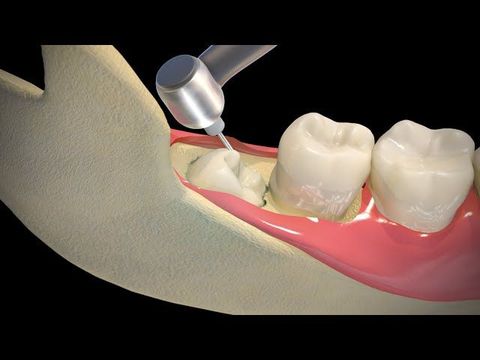Teeth Whitening Explained: A Complete Guide With Insights, Tips, and Essential Information
Teeth whitening refers to a range of methods designed to brighten the natural shade of teeth by reducing stains and discoloration. It exists because daily habits—such as consuming tea, coffee, and certain foods—gradually affect tooth color. Even natural aging leads to enamel thinning, which makes teeth appear darker over time. People often explore whitening solutions to maintain oral hygiene appearance, support confidence, and manage discoloration caused by long-term lifestyle patterns.
The concept has evolved from simple home remedies to scientifically evaluated whitening agents used under guided conditions. High search-interest topics such as “enamel whitening,” “oral hygiene enhancement,” “safe whitening methods,” “stain reduction insights,” and “dental discoloration explanation” highlight how widely people want to understand this topic today. Teeth whitening continues to be a common area of study in dentistry because it links cosmetic appearance with oral health awareness, two areas increasingly prioritized worldwide.
Why Teeth Whitening Matters Today
Teeth whitening matters to a wide segment of the population due to rising awareness about oral health, appearance, and long-term hygiene. Stains from beverages, tobacco, or medication can affect how teeth look, and many individuals seek information to understand what is safe, what works, and what scientific research supports.
Several groups benefit from reliable knowledge:
-
Individuals experiencing surface stains due to dietary habits
-
People concerned about enamel discoloration after environmental or lifestyle factors
-
Adults who experience natural yellowing with age
-
Those wanting general oral hygiene enhancement
Teeth whitening information helps solve common issues such as:
-
Understanding the causes behind discoloration
-
Learning safe approaches and avoiding harmful practices
-
Recognizing when enamel sensitivity may require caution
-
Comparing different whitening categories such as at-home hygiene practices and professionally supervised approaches
-
Identifying high-value educational keywords such as “oral brightness improvement,” “stain prevention insights,” “enamel-friendly whitening,” “non-invasive whitening techniques,” and “dental health knowledge”
The focus today is less about appearance alone and more about informed decision-making, safety, and evidence-based methods.
Recent Updates and Trends
Over the past year, several updates have shaped how people understand teeth whitening, especially as research continues to analyze enamel safety and whitening gel concentration.
2024–2025 notable updates include:
-
Research on sensitivity reduction (2024): Studies published in early 2024 highlighted how lower-concentration whitening agents paired with remineralizing ingredients may reduce sensitivity.
-
Stronger focus on enamel health (2024–2025): Dental associations have emphasized balanced whitening routines that avoid overuse, supporting safer oral hygiene practices.
-
Awareness of ingredient transparency (2025): Many health organizations reported increased attention to clear labeling and ingredient explanations, which helps consumers better understand whitening compounds.
-
Modern stain-removal cleaning tools (Late 2024): New oral hygiene devices with polishing features became widely discussed, emphasizing mechanical stain reduction without chemical bleaching.
-
Digital tracking trends (2025): Apps that help individuals monitor their oral hygiene patterns, shade changes, and sensitivity have gained traction.
These developments show a shift toward education, safety, and personalized understanding rather than trend-focused whitening attempts.
Regulations, Rules, and Policy Considerations
Teeth whitening is influenced by general oral health regulations, which help ensure that whitening compounds do not exceed safe concentration levels.
Some common regulatory themes include:
-
Ingredient control: Most regions regulate maximum allowed concentrations of active whitening ingredients to protect enamel and gums.
-
Product labeling rules: Health authorities require clear labeling, usage directions, and safety warnings to prevent misuse.
-
Professional oversight: In many countries, stronger whitening methods may only be used under supervised conditions within regulated dental environments.
-
Consumer safety standards: Rules emphasize transparency, discouraging misleading claims or exaggerated results.
-
Age-related guidelines: Some regions recommend age thresholds for whitening to ensure enamel maturity before undergoing any strong whitening processes.
Policies aim to help individuals understand safe usage while encouraging informed decision-making. These rules reinforce the importance of scientifically supported approaches, especially for high-interest educational topics such as “safe enamel whitening standards,” “regulatory whitening guidelines,” and “oral care compliance information.”
Helpful Tools and Resources
A range of resources can support individuals exploring teeth whitening insights:
Apps and Digital Tools
-
Shade-tracking apps: Help monitor tooth shade changes over time
-
Oral hygiene reminder apps: Encourage consistent brushing routines
-
Sensitivity-tracking tools: Useful for identifying which products may cause discomfort
Educational Websites
-
Official oral health associations
-
Dental research institutes publishing whitening studies
-
Verified healthcare information platforms
Guides and Checklists
-
Daily stain-prevention checklist
-
Enamel-friendly diet reminders
-
Oral hygiene improvement schedules
Whitening-Related Tools
-
Shade charts for personal reference
-
Tooth-friendly polishing tools for surface stain removal
-
Sensitivity-relief pastes with remineralizing properties
These resources support better understanding and help individuals follow consistent, safe, and informed approaches.
Frequently Asked Questions
1. What causes teeth to become discolored?
Teeth discoloration occurs due to lifestyle habits such as consuming strongly pigmented foods and beverages, smoking, or inadequate oral hygiene. Natural aging and certain medications may also affect enamel transparency or dentin color, leading to a darker appearance.
2. Are all whitening methods safe for enamel?
Most methods designed with regulated ingredient concentrations are considered safe when used responsibly. However, overuse of strong whitening agents or abrasive materials can weaken enamel. Evidence-based guidance and proper usage instructions help minimize risks.
3. How long does whitening typically last?
Whitening duration varies depending on diet, oral hygiene patterns, enamel condition, and stain severity. Maintaining good hygiene habits and avoiding heavily pigmented foods prolongs the brightness.
4. Why do some people experience sensitivity after whitening?
Whitening agents may temporarily affect the enamel surface or open microscopic pathways leading to the nerve. Sensitivity usually resolves on its own, especially when using products formulated with enamel-strengthening or desensitizing components.
5. Can natural methods brighten teeth effectively?
Natural whitening methods provide mild surface stain removal but do not change the deeper tooth shade. They may complement oral hygiene routines but should be used carefully to avoid enamel abrasion or imbalance.
Conclusion
Teeth whitening continues to be a widely discussed subject because it combines appearance improvement with the larger theme of oral health awareness. With clear information, updated research, and safety-focused regulations, individuals can make informed decisions about whitening approaches that suit their needs. Understanding enamel behavior, stain causes, and scientifically supported methods contributes to healthier long-term habits.
Educational resources, digital tools, and research-backed insights allow people to approach whitening with confidence and knowledge rather than trial and error. As trends continue to shift toward safety, transparency, and informed choices, teeth whitening remains an important topic that reflects evolving oral care priorities.
Disclaimer: The information provided in this article is for informational purposes only. We do not make any claims or guarantees regarding the accuracy, reliability, or completeness of the information presented. The content is not intended as professional advice and should not be relied upon as such. Readers are encouraged to conduct their own research and consult with appropriate professionals before making any decisions based on the information provided in this article.





